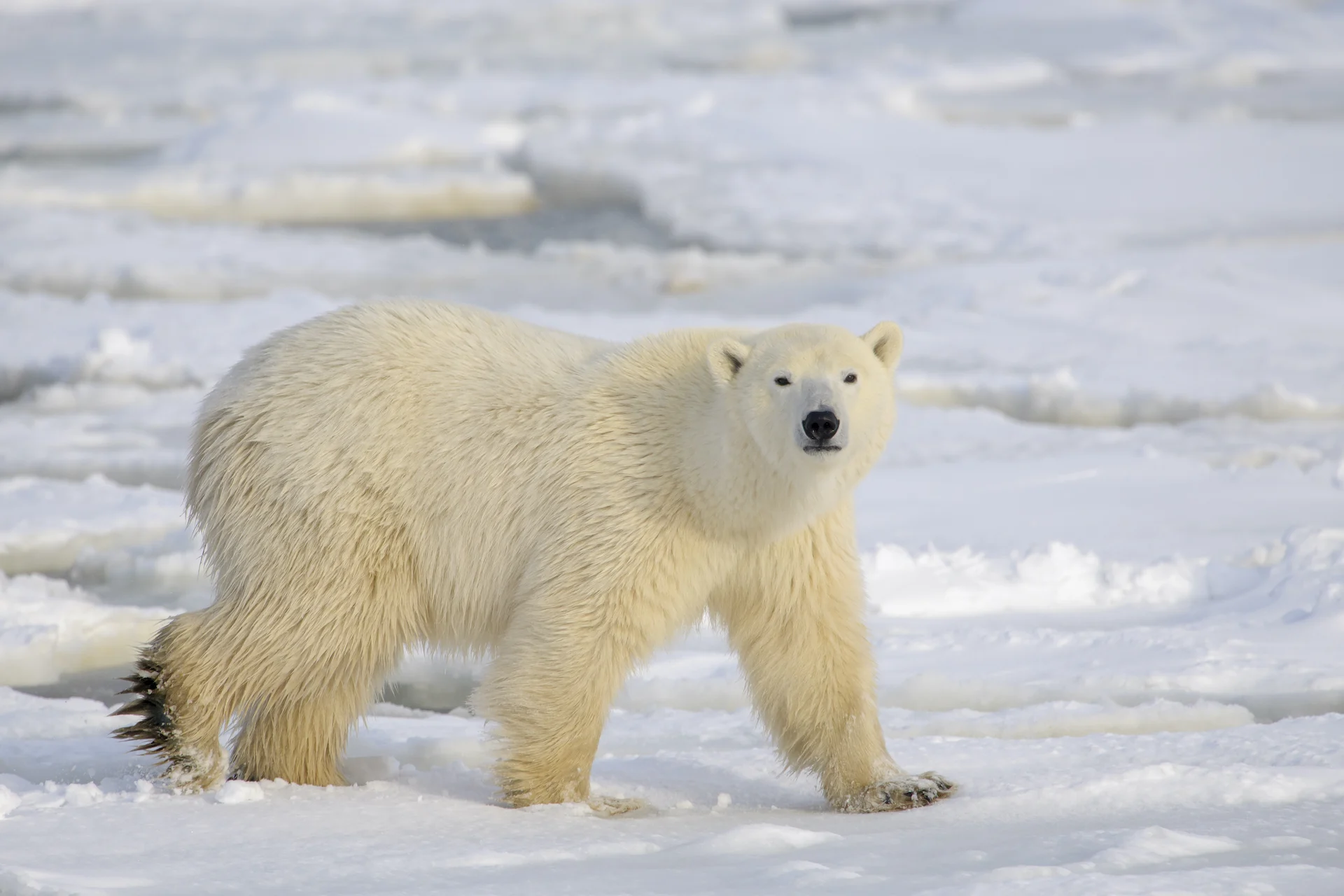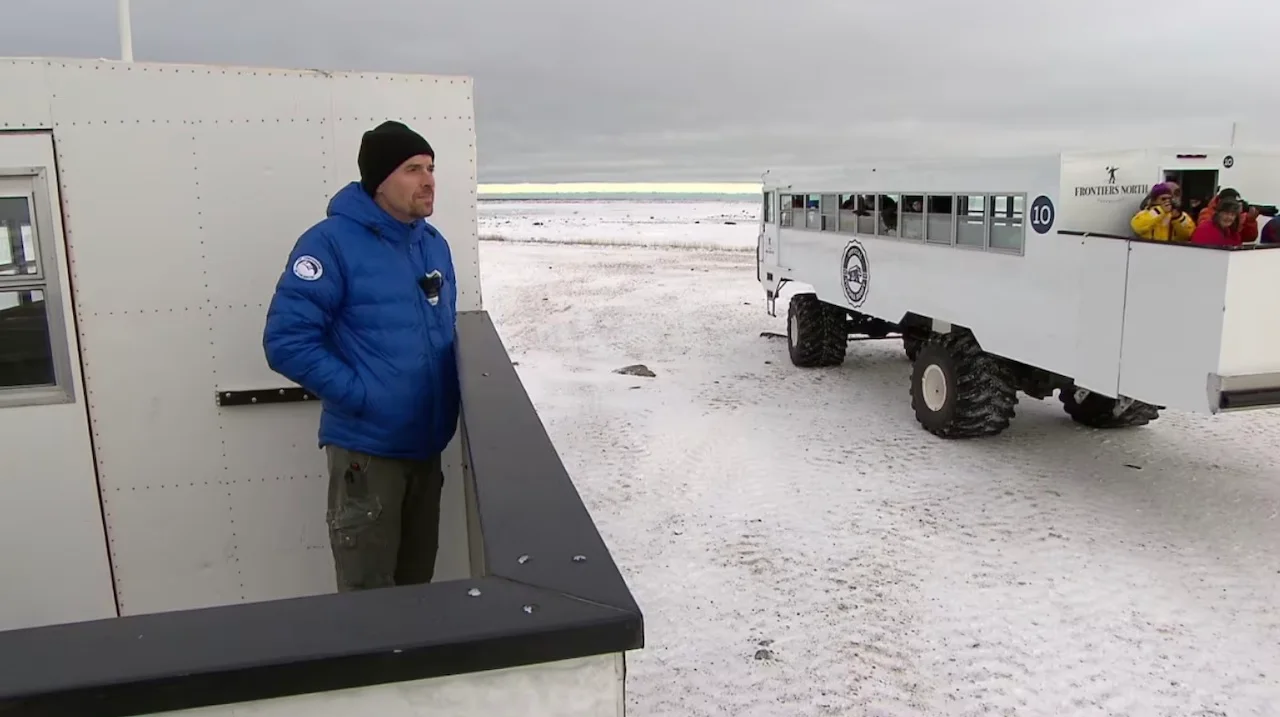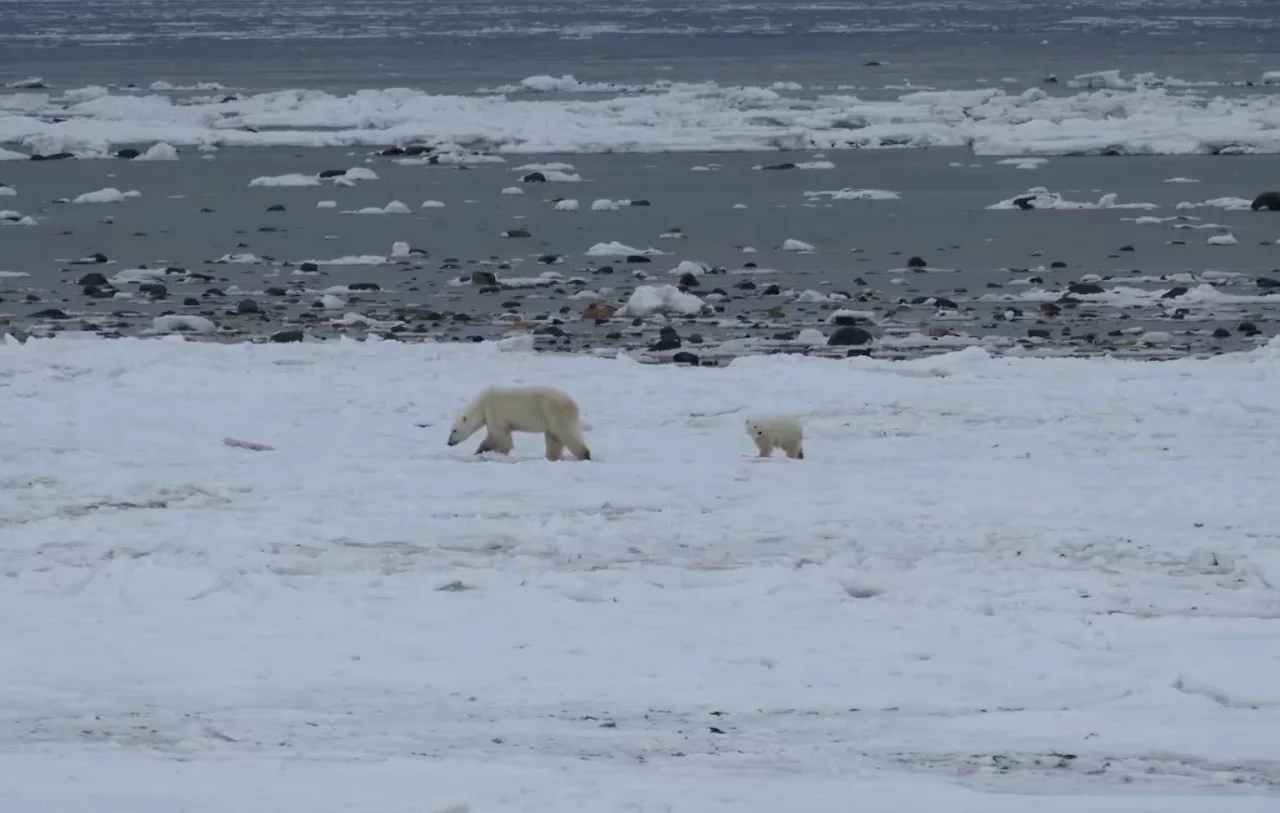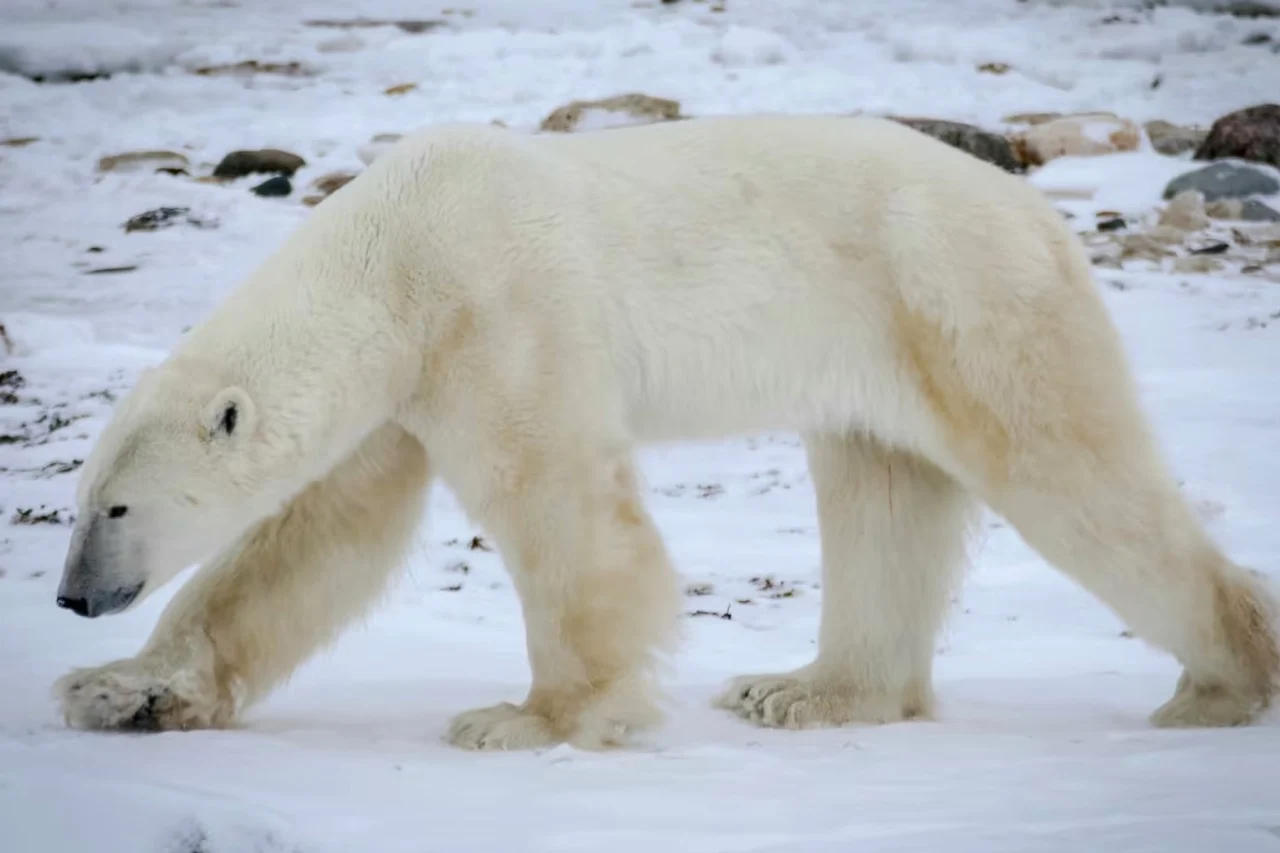
Churchill considers burning, composting waste to keep polar bears out of town
The Town of Churchill is looking to change how it deals with its waste, in hopes of preventing polar bears from making their way into the northern Manitoba community.
Unofficially known as the polar bear capital of the world, Churchill is studying how it can burn and compost waste that can attract bears and bring them into contact with people.
Waste is currently stored in an old military building north of the town's airport, where it sits for two to three years before it's taken to an enclosed landfill, said Geoff York, senior director of research and policy with Polar Bear International — a non-profit that's working with the town on the project.
DON'T MISS: 'Bear-dar' uses AI to protect communities and polar bears
"If you think of this massive, kind of open-air metal building sitting with two years of trash inside of it, what an attractant that could be for hungry bears," he said.

Geoff York, senior director of research and policy with Polar Bear International, is seen here in a file photo on the shore of Hudson Bay near Churchill, Man. (Trevor Brine/CBC)
But a new waste facility could help solve this problem.
Burning the waste when it's collected means polar bears will be less likely to wander into town, York said.
"Getting that waste processed more quickly — not holding it … should help eliminate a significant source of attractant smell around the community," York said.
The town is considering using a pyrolytic thermal oxidizer — sometimes called a thermal incinerator.) — to burn non-organic and burnable waste, said Susan Maxson, a consultant working with Churchill on the project with the help of a University of Manitoba professor who specializes in waste management.
The waste would go through two chambers that would heat it at very high temperatures until it breaks down and contaminants are removed. It then would get moved to a scrubber, which would make sure anything emitted from the burning process is environmentally safe, Maxson explained.

(Getty Images)
"We're looking to be as green as possible. We are a green community ... that has been struggling to be green in this respect, and this is as environmental as we can get in the north, we think," she said, adding that the proposed process is still being considered and could change.
"We're always looking for creative ways of finding a clean solution to disposing of our waste," said Churchill Mayor Mike Spence.
"We're looking at a solution that in fact can be a model for other northern communities."
The project would also turn organic waste, which wouldn't be burned, into compost. The waste would be broken down inside the facility in an "in-vessel composter," said Maxson.
"The process is quite quick, and it stops smelling very quickly," she said.
The compost would then cure outside before it's distributed to people's yards or other places in the town. This wouldn't attract bears, Maxson explained, since the organic waste is already broken down.
"So once that's broken down, the bears go, 'There's no food here,'" she said.

Projects like the proposed waste facility are becoming increasingly important for polar bears' survival in the face of their declining population and a warming climate, said York. (Cameron MacIntosh/CBC)
The heat generated from burning the waste would also be used to heat the community's water supply so pipes don't freeze in the winter, said York.
That's currently being done with hydro power, he said.
"We hope with this new pilot project … can be entirely done with heat from the incineration."
Population decline
Polar bear population numbers in the western Hudson Bay region, where Churchill is located, have plunged in recent decades, York said, from around 1,200 bears in the 1980s to about 600 or 620 in 2021.
As of Nov. 28 this year, the bears in western Hudson Bay had spent 164 days on shore, he said. That's tied for the fifth-longest amount of time the bears have spent off the ice since 1979.
Churchill saw some polar bear activity in November, when mild temperatures slowed the formation of sea ice, said York.
Mayor Spence said the bears haven't been venturing into the town since the sea ice formed, around the third week of November.

A feasibility study on the proposed waste facility project was started in October. (Cameron MacIntosh/CBC)
John Iacozza, an environment and geography instructor at the University of Manitoba who studies polar bears' habitat, said the later sea ice forms, the later it is before polar bears can go out onto it to hunt for food — which can force them shore and into contact with people.
As sea ice formation continues to vary, the bears could experience "dramatic impacts," he said.
"What happens this year … is really going to impact the lifespan of that polar bear. Their mortality will increase, so their ability to reproduce is going to be impacted," said Iacozza.
"It's not necessarily just this year and what's happening right now, but the implications that's going to have later on in terms of the whole population structure of the polar bears in Churchill."
Process 'could be a model'
York said projects like the proposed new waste facility are becoming increasingly important for polar bears' survival in the face of their declining population and a warming climate.
"As we're losing sea ice in more places, we're seeing polar bears spend more time on shore and for longer periods across the Arctic. And that's putting extra pressure not just on polar bears but on … those who live, work and recreate in the north," he said.
Maxson said the town is in the very early stages of the proposed new waste facility project and the suggested process could change as a feasibility study continues. That includes looking at "extremely high environmental protocols," she said.
WATCH: Can polar bears fight off climate change by eating reindeer?
She started working on the feasibility study in October and hopes to have it completed by next spring. The goal would be to have the new building up and running by 2025.
"I am so excited because I think that this is a process that could be a model for so many places that are struggling like we're struggling," Maxson said.
Spence said it's too early to have a cost estimate on the proposed project.
Thumbnail courtesy of Getty Images-1307238129.
The story was originally written by Rachel Ferstl and published for CBC News.









